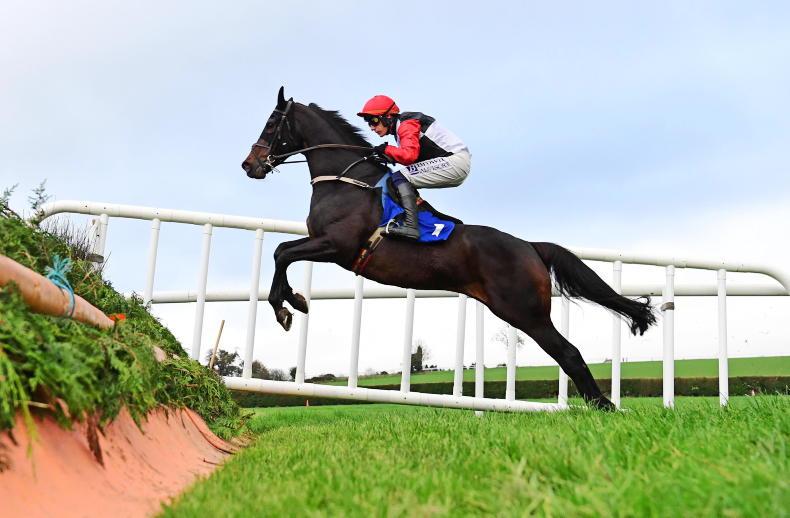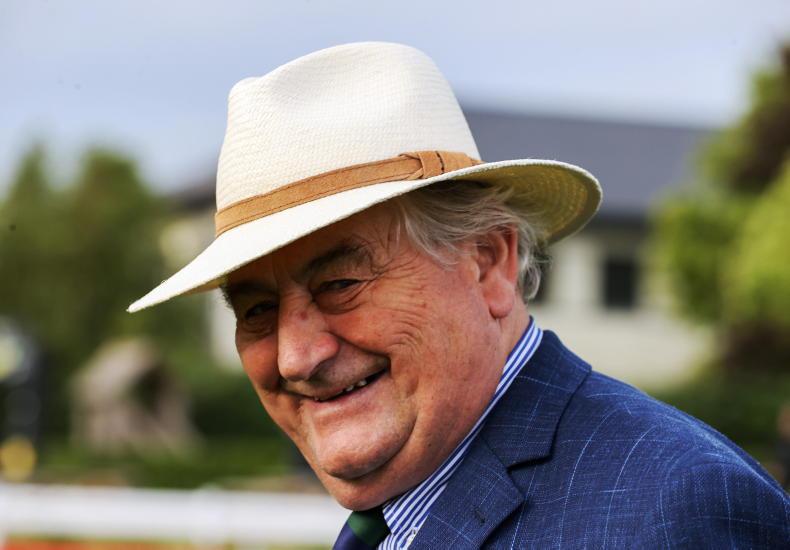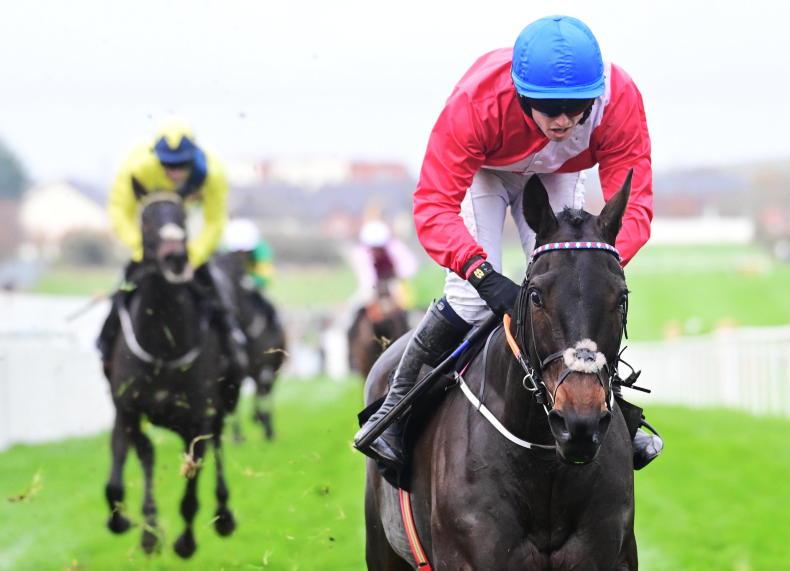NAAS held the best overall card of the weekend though it makes sense not to get carried away with the performances there; decent ground meant fields were not what they might have been, and they were further weakened by non-runners on the day.
Quilixios put up the performance of the day in the Barberstown Castle Chase, Darragh O’Keeffe keen to make the race a test of both fitness and jumping, his mount doing well on both counts, especially as he was pushed into the two fences before the final turn to put the others under pressure.
Quilixios had a messy 2023/’24 season, winning on chase debut before being bizarrely upped to three miles then winning back at the minimum trip on this track. He appeared to disappoint at both Cheltenham and Aintree afterwards but there were excuses, missing the break in the Arkle and then setting too strong a pace in the Maghull.
He is in good hands for a two-mile graded chase campaign for all the yard have other big players in the division and his time performance here was excellent: he completed the course 13.5 seconds quicker than Farren Glory in the later novice chase, and was marginally faster than the Elliott horse in the closing stages.
Marine Nationale’s return was only adequate, for all the run might have been needed. His head carriage was high, as it has been on and off during his career, but a bigger concern was his jumping, numerous errors on his way around. If anything, this might be the easiest jumping test he will face all season as now he is headed for open Grade 1 chases.
Excellent prospect
The Brown Lad Handicap Hurdle produced a likeable winner in The Busy Fool as he landed his second win in as many handicap starts. This race had a smaller field size (11) than is typically the case but he beat well-backed, race-fit horses while he was returning from a 201-day break and looks an excellent prospect for both similar races and chasing down the line.
That said, the third Sir Allen was unlucky as he got badly shuffled back on the turn in before finishing well from a bad position to be beaten less than two lengths. Some of that position was his own doing as he was inclined to jump his hurdles upright but having dropped from a peak rating of 131 (British mark), he now looks well-treated off 122.
Naas can favour front-runners over jumps, especially on decent ground, and so it was on Saturday. The in-running lines for the first seven winners per Irishracing.com read: made all, made all, raced third, made all, led, made all and soon led.
The winner of the closing bumper, Carrigmoornaspruce, was the exception and not only was the track setup against her but the pace was also slow, with Declan Queally saying afterwards that “I was cursing myself when I saw [the favourite] following the leader as there was no real middle pace in the race…I was a long way off the pace but she got me out of trouble.”
Carrigmoornaspruce thus shaped a fair bit better than the result to win by two and a half lengths going away, her previous form with Amen Kate looking strong now, and she has a pedigree to say she will be better over further.

THE two feature chases at Clonmel last Thursday were run in contrasting fashions, Saint Sam winning the Clonmel Oil in a time 10.7 seconds quicker than the earlier T.A. Morris Memorial, but he was 4.2 seconds slower from three out than the mares.
This was perhaps the best performance yet by Saint Sam, who generally jumped well in front, though whether his revised official rating of 161 will carry through the winter is doubtful; he seems more a top summer/autumn pot hunter than a true winter graded type.
The third, Solness, did well to stick with the winner as long as he did, the pace at this trip stretching him, while runner-up Fil Dor seemed to do well to make up a lot of ground from three out, his finishing speed percentage of 108% very different to the 100% for the winner.
He may not be one to get carried away with, however. It is a concern that he got so far back in those early and middle stages and his small stature seems to count against him in these better races; not a bad jumper per se, it does seem to take him more effort than his bigger rivals.
Morris form
Willie Mullins also won the T.A. Morris although not with the mare the betting expected, Pink In The Park landing a breakthrough blacktype success after many tries over hurdles, seemingly a better chaser. The 1/3 favourite Allegorie De Vassy could manage only fourth, and having won her first four starts for Mullins is two from nine since. She has become inconsistent, not only race to race but in races themselves, inclined to jump each fence in a different manner.
The runner-up Must Be Obeyed started her season well and will continue to be a force going this way around, her record right-handed over fences when competing at trips short of three miles reading: 4113P3423 while the third A Law Of Her Own shaped well over a trip further than ideal.
She was a novice against more experienced mares here, but her jumping was good, and while she got her blacktype over an intermediate trip, will be better down in distance. She is hardly bred for the job being by Lawman (sired four winning chasers in Britain/Ireland) but has taken to it well.
NO time in the punting year is a cinch, but November can be a particularly challenging time. National Hunt-centric punters have been building up to this all autumn but might be too eager to play in markets where fitness can matter more than form.
Contrasting the typical November with the typical February illustrates their different challenges. Looking at runners in Irish jumps races back to 2020, 22.3% of all runners in November were coming off a break of 100 days or more whereas in February that figure drops to 10.3%.
The kings of November are as expected. Gordon Elliott is a long way clear with 134 winners from 634 runners in this period in the last five years, having more than twice as many runners as the next trainer, Henry de Bromhead, with 281.
There are different ways for punters to try and get a gauge on fitness at this point of the season. Market signal is an obvious help. A horse’s individual record fresh can tell us things, trainers often working in concert with that ‘best fresh’ angle and having such runners ready first time up, while broader trainer stats have their place too.
Both Elliott and Willie Mullins come out well with their runners coming off 100 days or more of an absence in November time, but a back to the future approach with Noel Meade is also worth considering.
 When Meade was winning National Hunt trainers’ championships, he was an irresistible force at this stage of the year, and that continues even with his reduced numbers.
When Meade was winning National Hunt trainers’ championships, he was an irresistible force at this stage of the year, and that continues even with his reduced numbers.
Since 2020, he has eight winners and 13 places from 32 runners coming off a break in November, win and place strike rates that put him in the mix with the best, for a level-stakes profit of 32.23 points.
Philip Rothwell does well too with a small sample. His overall strike rate in November since 2020 is only 3.2% but that improves to 20% (four winners from 20 runners) with those coming off an absence - such as The Busy Fool.
